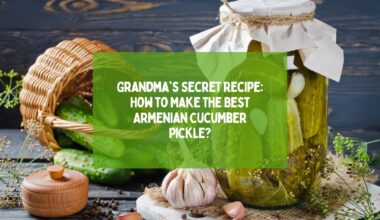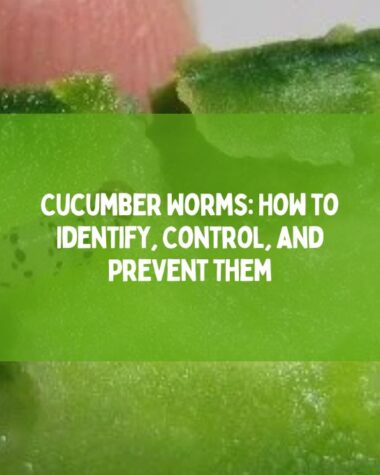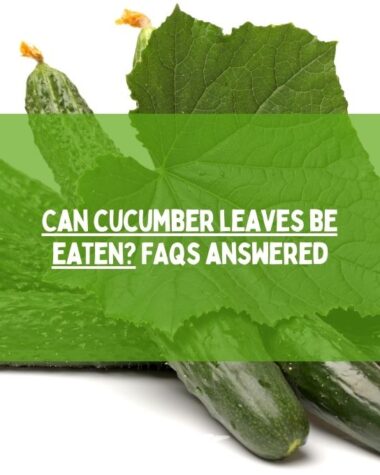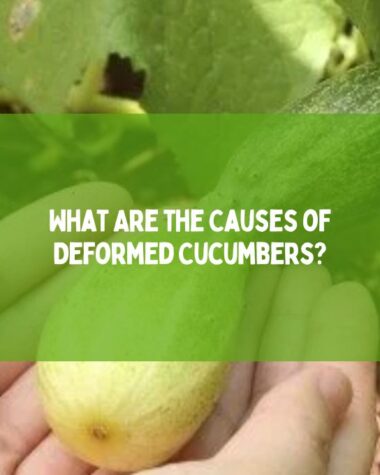Cucumbers are a popular vegetable in salads, sandwiches, and various dishes. But did you know that other vegetables look like cucumbers?
As someone who loves to experiment with different types of vegetables in my cooking, I recently found myself wondering about vegetables that look like cucumbers. While we all know cucumbers are a popular vegetable, it’s interesting to discover other, similar-looking vegetables that could potentially be used as a substitute for or in addition to cucumbers.
After conducting some research, I was surprised to find several vegetables that share a similar appearance to cucumbers but have distinct differences in taste and texture.
In this article, I will share my findings on the various vegetables that look like cucumbers and their unique characteristics. Let’s start with 16 vegetables.
16 Vegetables That Look Like A Cucumber
Numerous vegetables closely resemble cucumbers, including zucchini, summer squash, winter squash, bitter melon, mirliton, pumpkin, gourd, cucuzzi, watermelon, cantaloupe, cushaw, and luffa.
Here’s a list of 17 renowned Vegetables That Look Like Cucumbers.
Zucchini
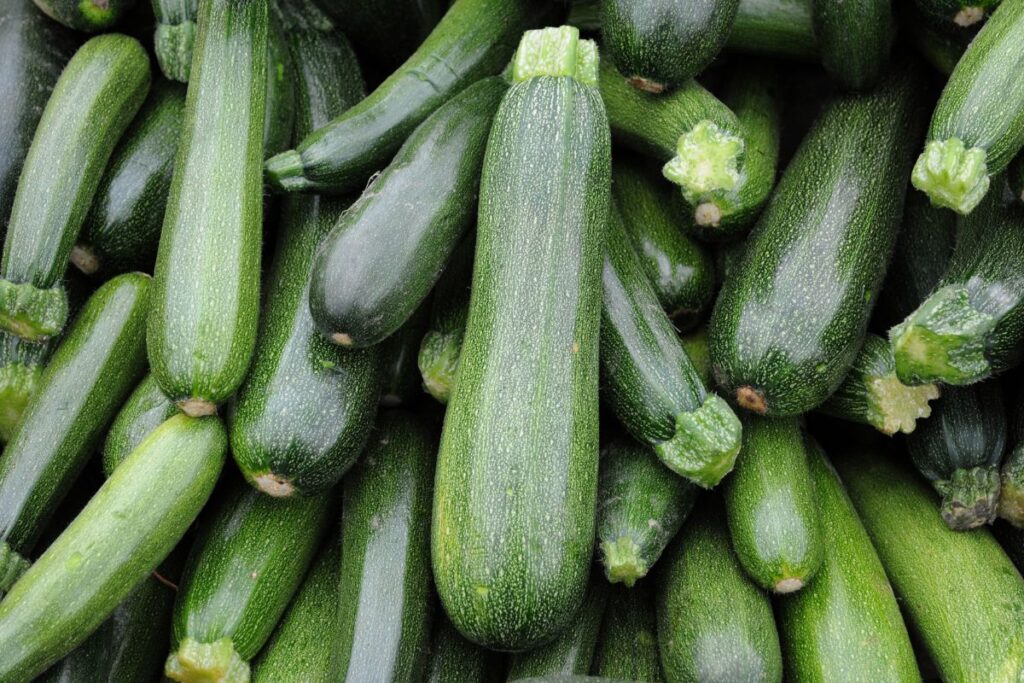
Zucchini, a popular garden staple, is one of the most common vegetables that closely resemble cucumbers in appearance. Although both zucchini and cucumbers belong to the same family, there are some key differences between these two versatile veggies.
Zucchinis typically have a thicker skin and a more robust flavor compared to the refreshing and mild taste of cucumbers.
Gardeners appreciate the fact that zucchini plants tend to be very productive since they grow quickly once established. It provides plenty of opportunities for trying delicious new recipes with this cucumber look-alike.
Some people may even find it difficult to distinguish between freshly harvested zucchini and cucumbers at first glance! However, upon closer inspection or after tasting them side by side, discerning palates can easily identify each vegetable’s unique characteristics.
Summer Squash

Summer squash is another member of the cucumber family that closely resembles cucumbers in appearance. These veggies come in various shapes, including round and cylindrical, with smooth or bumpy skin ranging from light to dark green.
They have a mild, slightly sweet flavor and tender flesh that can be eaten raw or cooked. One type of summer squash, called pattypan or scallop squash, has a unique shape resembling a flying saucer, which can make it more visually appealing for gardeners looking for an interesting crop to grow.
Summer squashes are also known for their high nutrient content, particularly vitamin C and potassium.
Winter Squash

Winter squash is another member of the cucurbit family that resembles a cucumber in shape but has thicker outer skin and firmer flesh. These vegetables, including varieties such as acorn, butternut, and spaghetti squash, are typically grown during the summer months and harvested in the fall.
Winter squash is packed with nutrients like vitamin A, vitamin C, potassium, magnesium, and fiber. It also has a slightly sweet taste that makes it perfect for roasting or baking as a side dish or incorporating into soups and stews during colder weather.
Bitter Melon

Bitter melon is another vegetable that looks like a cucumber, but it has a distinct taste and texture. It’s commonly used in Asian cuisine and has a bitter flavor that can be an acquired taste for some people.
Bitter melons are known to have several health benefits, including reducing blood sugar levels, improving digestion, and having anti-inflammatory properties. In addition to its nutritional benefits, bitter melon can add a unique flavor to dishes when incorporated into stir-fries or soups.
Related Reading:
- Kheera, Cucumber, and Kakdi – Understanding the Differences
- Bush Cucumbers: The Complete Guide to Growing and Enjoying Different Varieties
- Japanese Cucumber Info: How to Grow Japanese Cucumber From Seed?
- Can I Freeze Cucumbers?
- The Best Cucumber Varieties For Growing In Pots
- Refreshing Twist: The Ultimate Guide to the Cucumber Mint Margarita
- Kirby Cucumber: A Versatile and Nutritious Addition to Your Kitchen
- Cucumber Benefits for Skin: And How We can Use it
Mirliton
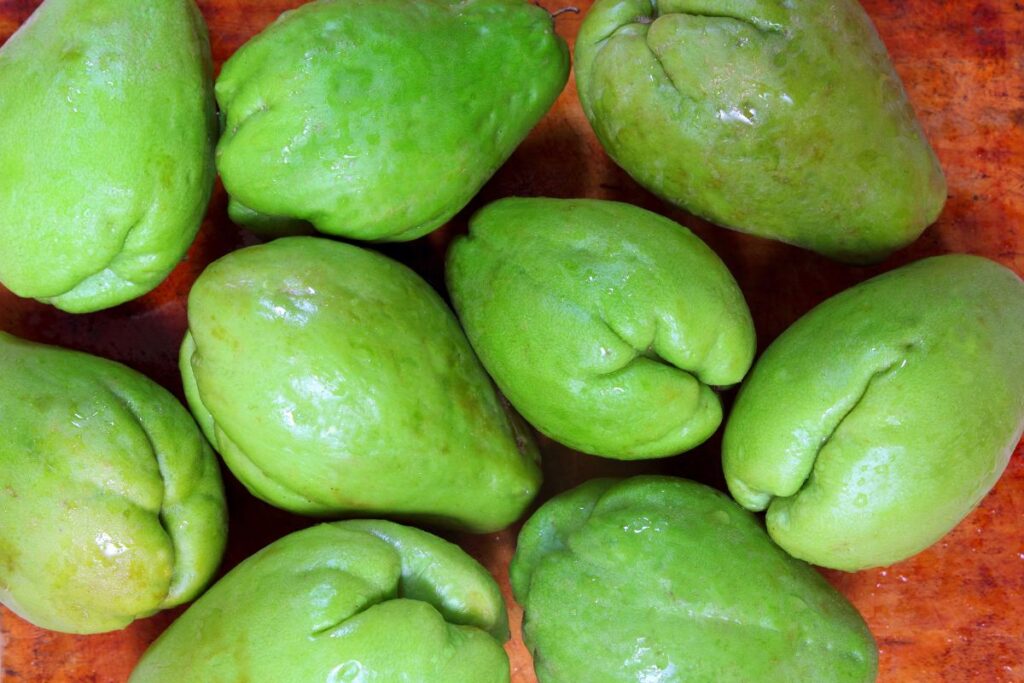
Mirliton, also known as chayote squash or vegetable pear, is a member of the cucurbit family. This pear-shaped fruit has a mild flavor and a crisp texture, similar to that of a cucumber.
It can be eaten raw in salads or cooked in dishes such as casseroles and stir-fries. Mirlitons are rich in vitamins C and B6, fiber, potassium, and antioxidants. They have shallow roots and grow well in warm climates with ample sunlight.
Pumpkin

Pumpkins are versatile vegetables that can be used in both sweet and savory dishes, making them an excellent cucurbit alternative. Known for their rich orange color and round shape, many people use pumpkins to create fall-themed decorations or delicious pumpkin pies.
While they may not have the same crunch as cucumbers, pumpkins offer a unique texture and flavor that can add depth to your meals. Plus, they’re packed with nutrients like vitamin A and fiber, making them a healthy choice for any diet.
Gourd

Gourds are another type of vegetables that looks like cucumbers, with a similar oblong shape and smooth skin. They belong to the same family as pumpkins and squash, known as cucurbits.
While some gourds are edible when young and tender, most are grown for ornamental purposes due to their unique shapes and sizes. Some popular types of gourds include bottle gourds, birdhouse gourds, and snake gourds.
Gourd plants can be grown vertically on a trellis or allowed to roam freely on the ground.
Cucuzzi
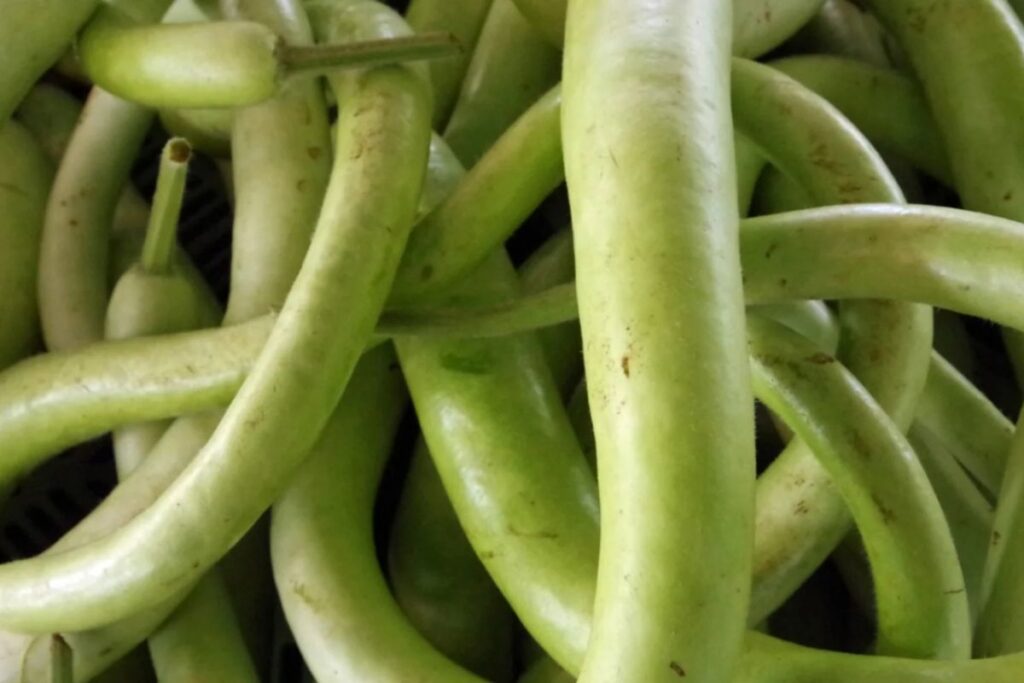
Cucuzzi, also known as Italian edible gourd or cucuzza, is a long, slender vegetable that belongs to the same family as cucumbers. This versatile vegetable can grow up to three feet long and has green skin that turns light beige when ripe.
Cucuzzi has a mild taste similar to squash and can be eaten raw or cooked in various dishes such as soups, stews, stir-fries, and even pickles. It’s often used in Italian cuisine and can be found at farmers’ markets or specialty grocery stores that sell Asian vegetables.
Related Reading:
- What Causes Holes In Cucumbers And How to Prevent It?
- 8 Zucchini Planting Tips For Best Harvest
- Growing Eggplant And Cucumbers Together Companion Planting
Watermelon
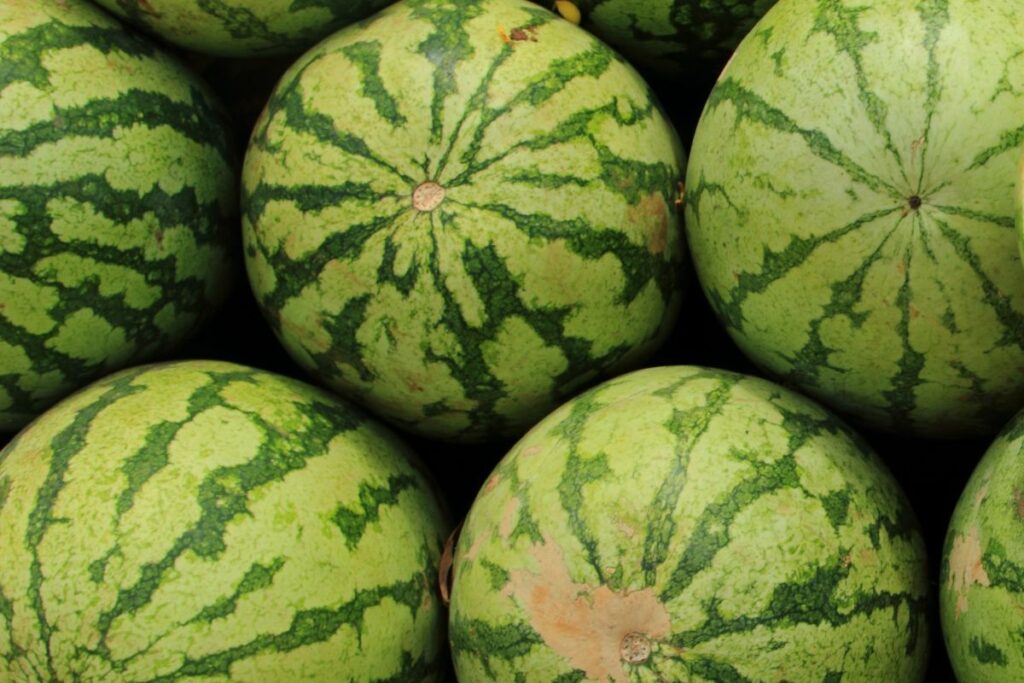
Watermelon is a delicious fruit that belongs to the cucumber family. It looks and tastes similar to cucumbers, but they are different in texture and flavor. Unlike cucumbers, watermelons have a hard outer shell that protects their sweet and juicy flesh inside.
They are a great source of hydration because they contain up to 92% water, making them perfect for hot summer days. In addition to their refreshing taste, watermelons also offer many health benefits, such as high levels of Vitamin C and antioxidants.
Cantaloupe

Cantaloupes are another vegetable that looks like a cucumber, and they belong to the same family. They have a similar elongated shape but tend to be larger than cucumbers.
Unlike cucumbers, cantaloupes are sweet and juicy, with orange flesh on the inside.
Cantaloupes are rich in vitamins A and C, as well as potassium, which makes them an excellent addition to any diet. These vegetables can be used in various ways, including by adding them to salads or smoothies or eating them raw as a snack.
Cushaw

Cushaw is a type of winter squash that looks very similar to cucumber. It has a long, cylindrical shape with light green skin and pale yellow flesh.
One unique aspect of cushion plants is their ability to grow very large. Some can reach up to 30 pounds! This makes them perfect for creating decorative centerpieces or using them as props during Halloween celebrations.
Cushaws are also known for being low-maintenance and relatively easy to grow in home gardens or on small farms.
Luffa

Luffa, also known as sponge gourd or dishcloth gourd, is a vegetable that closely resembles cucumbers in appearance. It has a long, cylindrical shape with green skin and white flesh inside.
When young, luffa can be eaten raw and has a mild cucumber-like flavor with a crunchy texture.
Aside from its household uses, luffa is also commonly used in Asian cuisine. In Chinese cuisine, it’s often stir-fried with meat and vegetables or cooked in soups. In Indian cuisine, it’s used to make dal (soup) or stuffed parathas (flatbread).
Armenian Cucumber
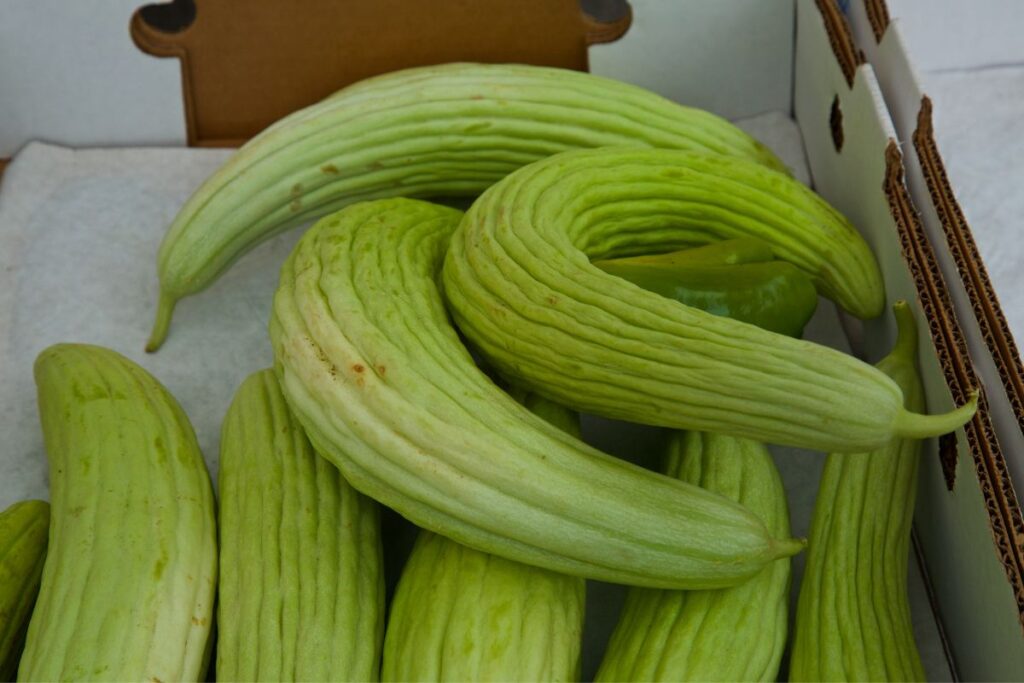
Armenian cucumbers, also known as yard-long cucumbers, are a unique addition to any garden. They have thin and tender skin that is edible and can grow up to 36 inches long.
Despite their name, they are not cucumbers but rather a variety of muskmelon.
Armenian cucumbers are one of the cucumber varieties that have a sweet flavor similar to honeydew melon and are often used in salads or eaten raw. They can also be pickled or added to soups for extra texture and flavor.
West Indian Gherkin
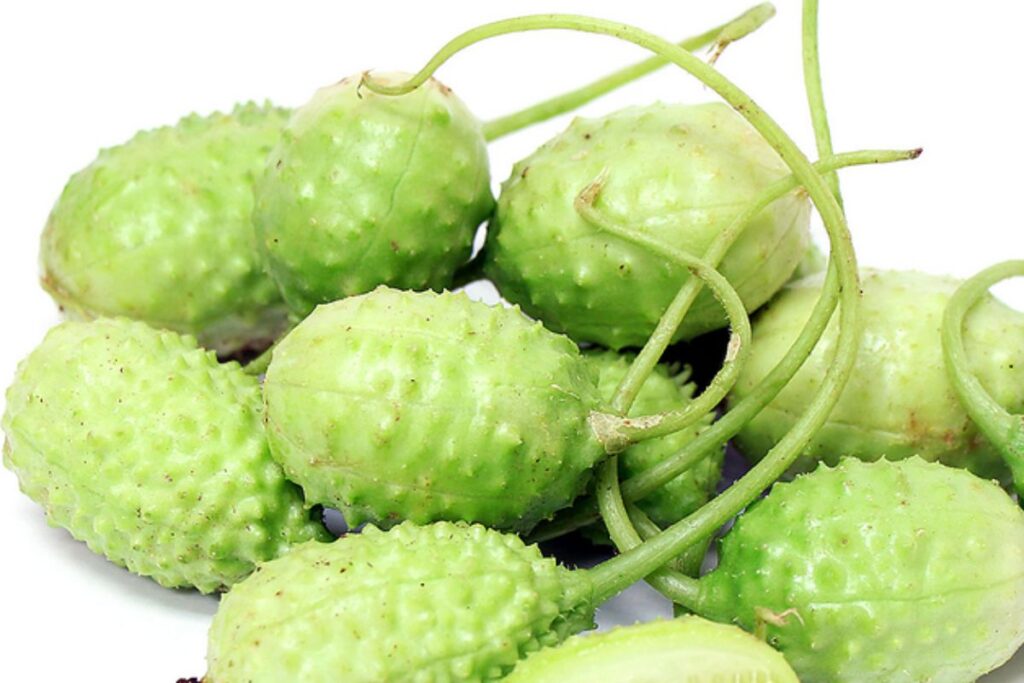
The West Indian gherkin is another cucumber lookalike that belongs to the cucurbit family. It’s a small, prickly fruit that grows on a vine and is popular in Caribbean cuisine.
Similar to other cucumber-like vegetables, it can be eaten raw or cooked and has a slightly tart flavor with a crunchier texture than traditional cucumbers.
Gardeners looking for something different to grow in their backyard may want to give this unique vegetable a try as it’s relatively easy to grow and produces high yields throughout the season.
Related Reading:
- 26 Early Growing Tomato Varieties For Short Season
- 12 Ways to Protect Your Tomatoes From Birds That Beyond Netting
- How To Grow Pumpkin Seeds In Pots?
Mexican Sour Gherkin
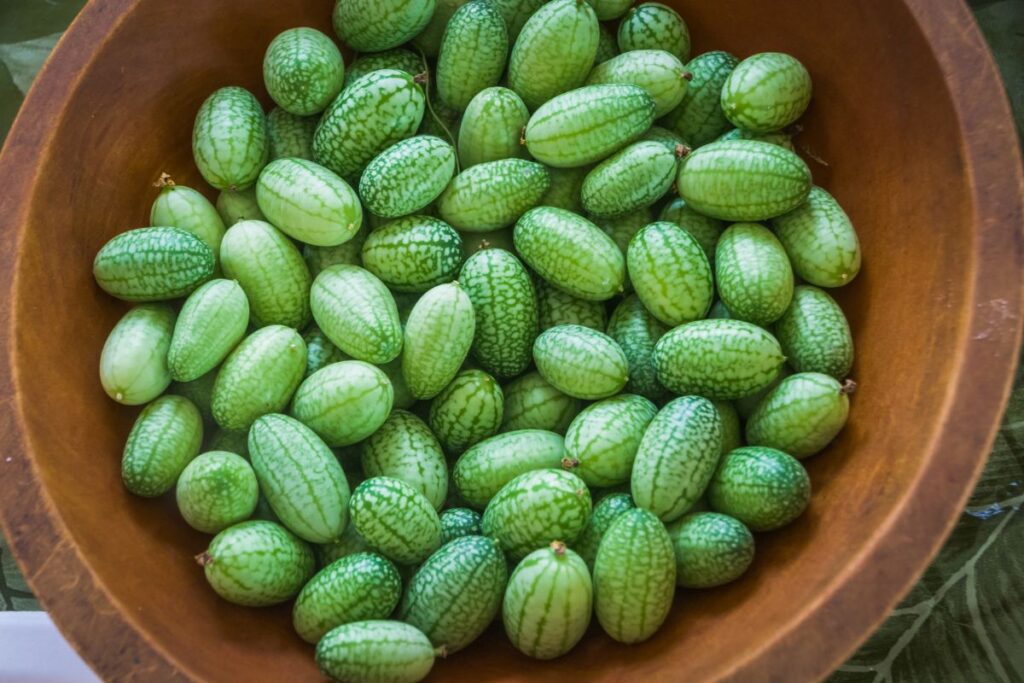
The Mexican sour gherkin, also known as cucamelon, is a small but mighty vegetable that looks like a miniature watermelon. It has a crunchy texture and a refreshing, citrusy flavor with hints of cucumber and lime.
Mexican sour gherkins are easy to grow in warm climates and can be used in a variety of dishes, from salads to pickles.
Many gardeners love the versatility of the Mexican sour gherkin because you can use it much like you would use a cucumber or even try it in new ways, like adding it to cocktails for an unexpected twist.
These delightful little vegetables are perfect for those who want something unique but still reminiscent of familiar flavors.
Long Green Eggplant

Long Green Eggplant is a vegetable that bears a striking resemblance to cucumbers in terms of appearance. These eggplants are long and cylindrical, with pale green skin that’s thin, tender, and edible.
They have a slightly bitter taste when raw but become sweeter as they cook.
What makes Long Green Eggplants stand out from cucumber-like vegetables is their unique texture, which is firm and meaty even when cooked. As such, they make an excellent ingredient in stir-fried dishes or soups, where they can add depth to the flavor profile while retaining their shape and texture.
Moreover, Long Green Eggplants are high in fiber and potassium, which offer several health benefits, including lowering blood pressure levels and providing digestive support.
Differences Between Cucumbers And Other Similar Vegetables
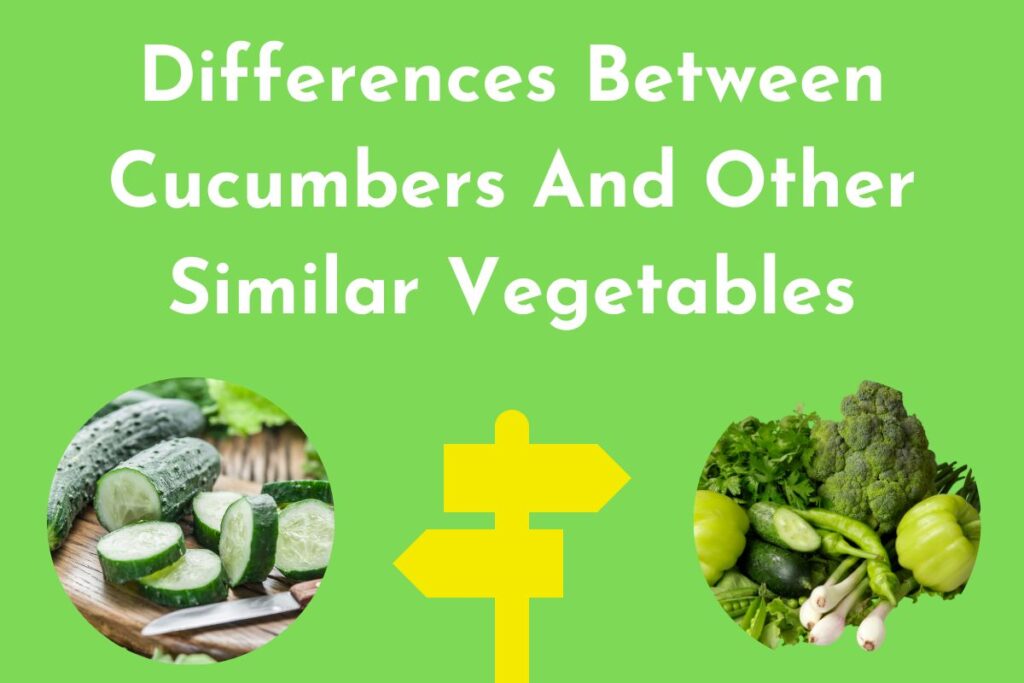
While vegetables like zucchini, summer squash, and bitter melon may look similar to cucumbers, there are distinct differences in taste and texture. Cucumbers have a refreshing, crisp taste and crunchy texture while zucchini has a soft texture with a mild flavor.
Taste
The taste of cucumbers and their lookalike vegetables can vary widely, with each vegetable bringing its unique flavor to the table. Cucumbers are known for their refreshing, slightly sweet taste that pairs well with tangy or savory dressings in salads.
In contrast, zucchini has a milder, earthier flavor that lends itself well to baking or grilling as a side dish or in casseroles. Bitter melon is another cucumber-like vegetable with a sharp, bitter taste that is complemented by spices and is commonly used in stir-fried dishes in Asian cuisine.
Texture
Another difference between cucumbers and their lookalike vegetables is their texture. While cucumbers have a crisp and crunchy texture, some alternatives can be more tender or even slightly fibrous.
Zucchini, for example, has a softer texture than cucumber, making it ideal for soups or roasting. Bitter melon has a unique warty exterior with soft flesh inside that requires parboiling before cooking to reduce its bitterness.
Winter squash tends to have denser flesh that holds up well when roasted or baked in recipes like muffins or bread.
Nutritional Value
Cucumber-like vegetables pack a punch when it comes to nutritional value. Most of these veggies are high in fiber, which is essential for digestive health and helps promote satiety.
They also contain essential vitamins and minerals such as vitamin A, vitamin C, potassium, and magnesium. Bitter melon, for example, is known to have anti-inflammatory properties and can help regulate blood sugar levels.
Zucchini is low in calories but still provides a good amount of nutrients that support healthy skin and vision. Additionally, summer squash is high in antioxidants that protect against damage from free radicals, which can cause chronic diseases like cancer or heart disease.
Related Reading:
- Growing Nantes Carrots: Tips And Techniques For A Bountiful Harvest
- Why Are My Pumpkin Leaves Turning Yellow?
- What Causes Bitter Cucumbers?
Conclusion
In conclusion, if you’re looking to switch up your veggie game, look no further than the cucumber family. From zucchini and summer squash to watermelon and cantaloupe, there are plenty of options that resemble cucumbers but offer unique tastes and textures.
These cucumber-like vegetables not only provide versatility in the kitchen but also pack a nutritional punch with their hydration benefits, anti-inflammatory properties, and high fiber content.
FAQs
What’s the Difference Between Cucumbers and Zucchini?
Cucumbers and zucchini differ in their appearance, taste, and texture. While cucumbers have green skin and a watery, crunchy texture with a refreshing taste, zucchinis have slightly bumpy skin with a smooth, firm texture and a slightly sweet flavor. Cucumbers are typically eaten raw and used in salads or as a snack, while zucchinis are usually cooked and used in various dishes such as stir-fries, pasta, and casseroles.
What are some vegetables that look similar to cucumbers?
Some vegetables that may be mistaken for cucumbers include snake gourd, chayote squash, Armenian cucumber, and bitter melon.
How can I tell the difference between a cucumber and other similarly shaped vegetables?
Cucumbers usually have smooth skin and a waxy appearance with rounded ends. Other vegetables may have bumps or ridges on their surface or different colors that set them apart from cucumbers.
Can substitute vegetables be used in place of cucumbers in recipes?
Yes, depending on the recipe you could use substitutes like zucchini or green beans instead of cucumbers.
Are there any health benefits to eating these cucumber-like veggies?
Yes, there are health benefits! Most of these vegetable substitutes contain high levels of vitamins A & C as well as essential minerals like potassium which help promote healthy digestion while boosting overall immune function within our bodies when consumed regularly over time even if not directly replacing actual cucumber consumption specifically every time they are eaten.

